Abstract
A method published by Elliott in 1958 for investigation of insecticide resistance in Anopheles larvae has been applied to strains of A. gambiae from various parts of West Africa, and the results analysed to provide information as to the proportions of the three possible genotypes in the different populations.
At Kano, the gene conferring resistance to dieldrin and gamma-BHC appears to be increasing in the wild population, being present in about 50% and 42% of the population in the homozygous (RR) and heterozygous (RS) states respectively. Theoretical considerations suggest that in a situation where the male heterozygote is sterile, the gene in the minority will tend to become extinct in the absence of any specific selection. In a colony maintained in captivity for six generations without intentional selection the reverse was seen to happen, the S gene increasing its representation at the expense of the R gene.
In Sokoto Province, some figures of the same type were obtained; these are analysed and found to produce results compatible with those from Kano, especially as regards the LC50 level derived for the effect of gamma-BHC on the RS fraction of the population.
At Freetown, a similar analysis suggests that the factor conferring resistance to gamma-BHC has also appeared. About 66% of the sample examined appear to carry the R gene.
At Ibadan, samples of the population showed some tolerance to dieldrin, but the presence of the specific type of resistance seen elsewhere was not established. The tolerance appears to be non-specific, as some relative tolerance to DDT appeared to be present also.
Full text
PDF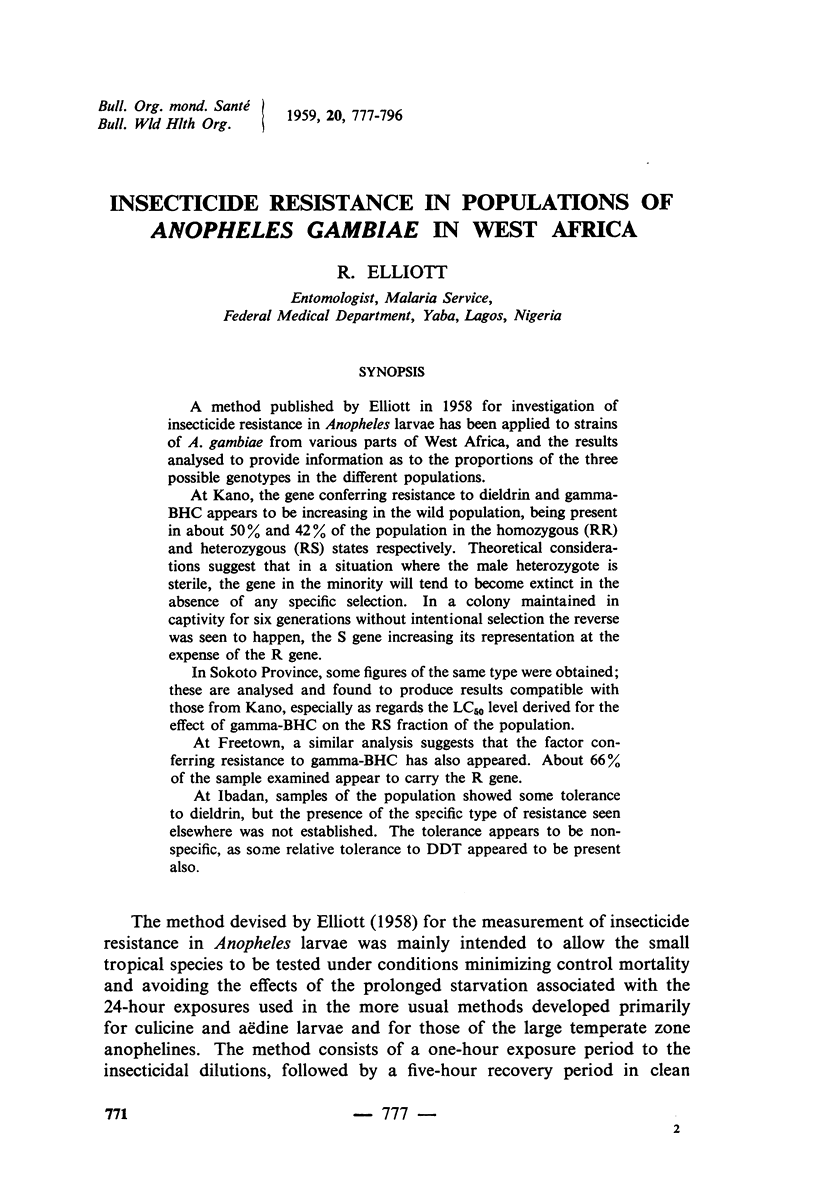
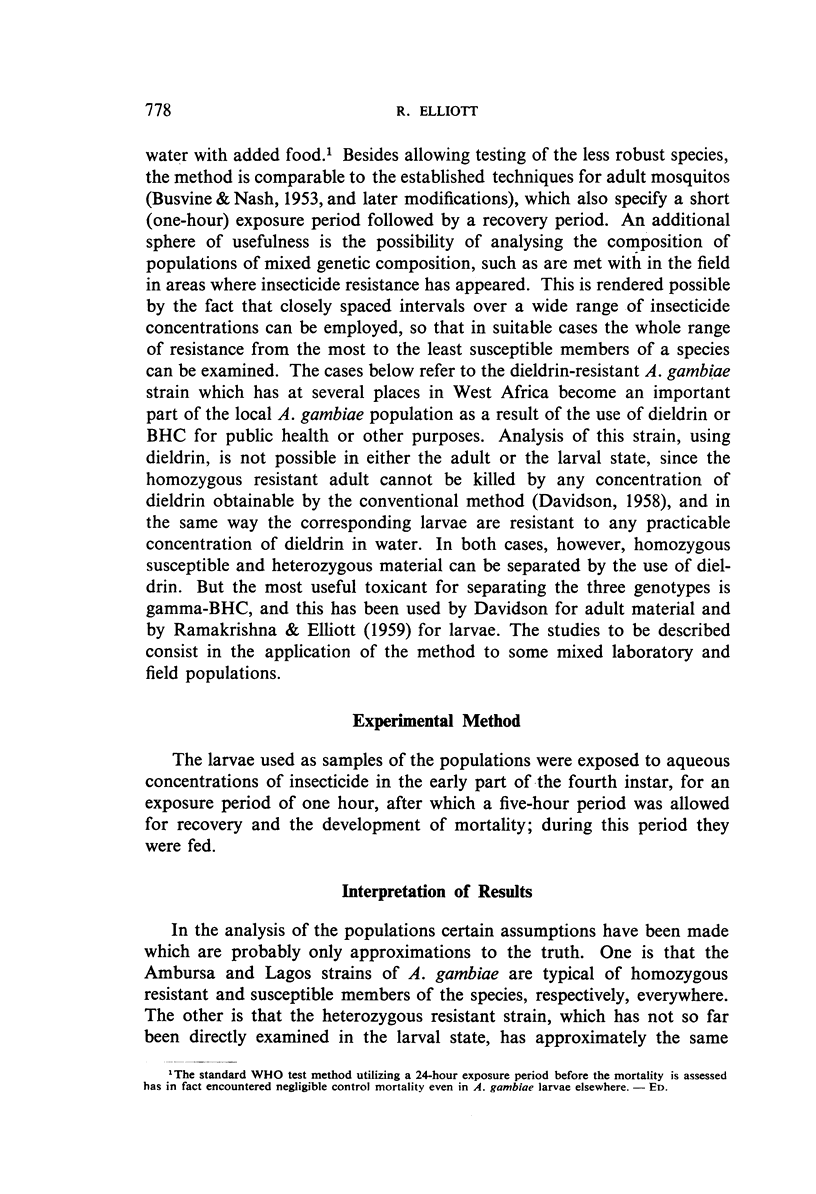
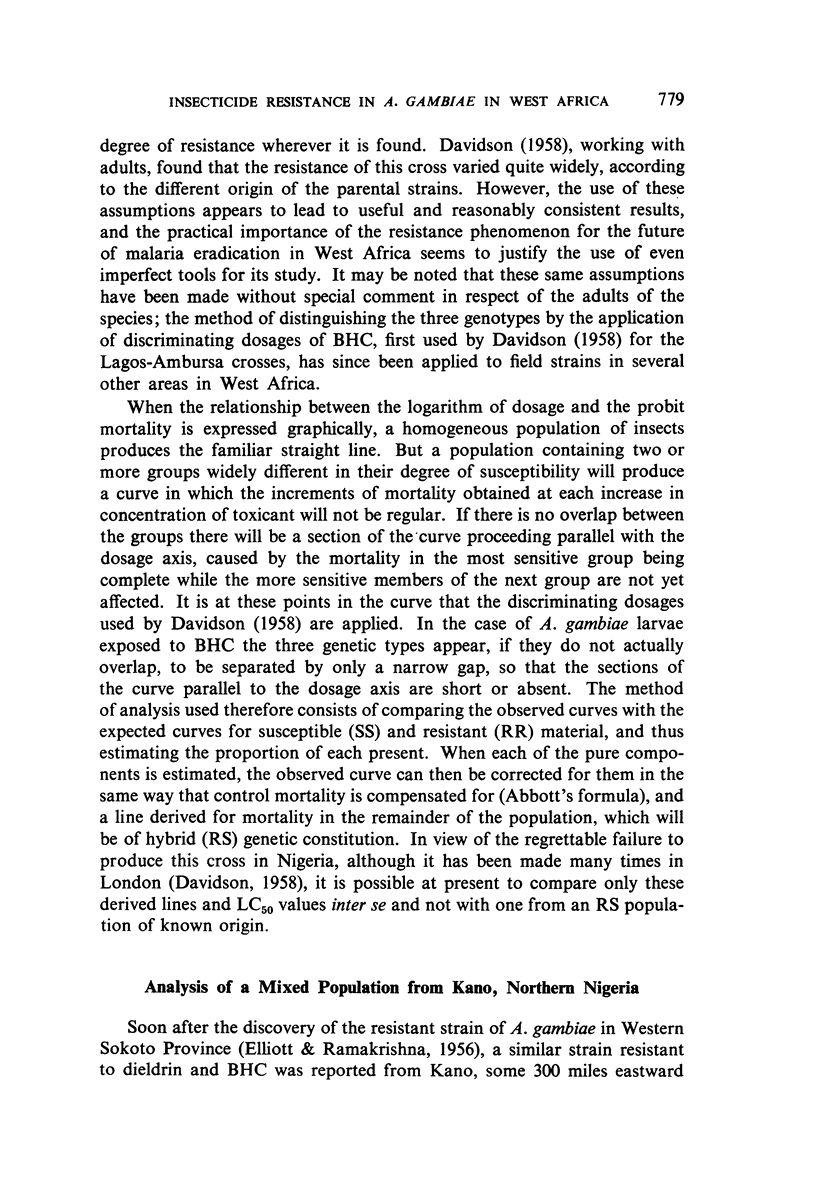
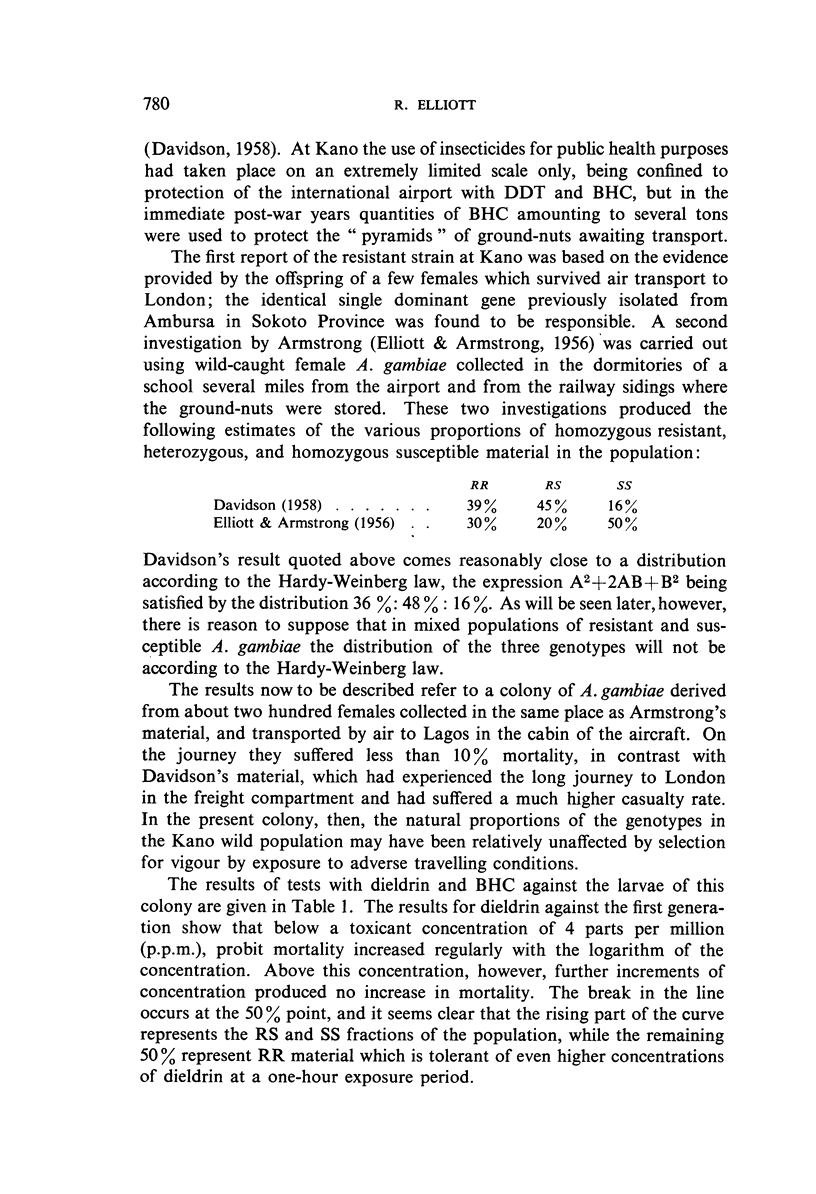
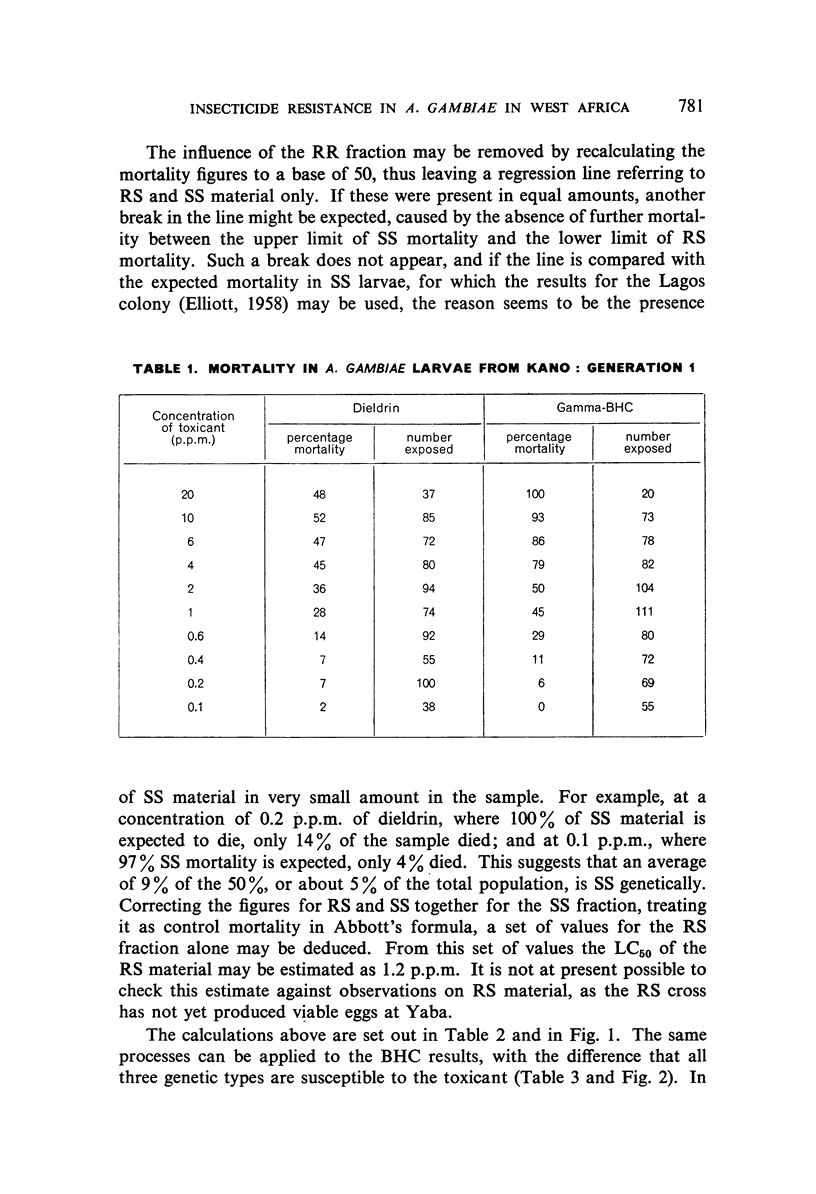
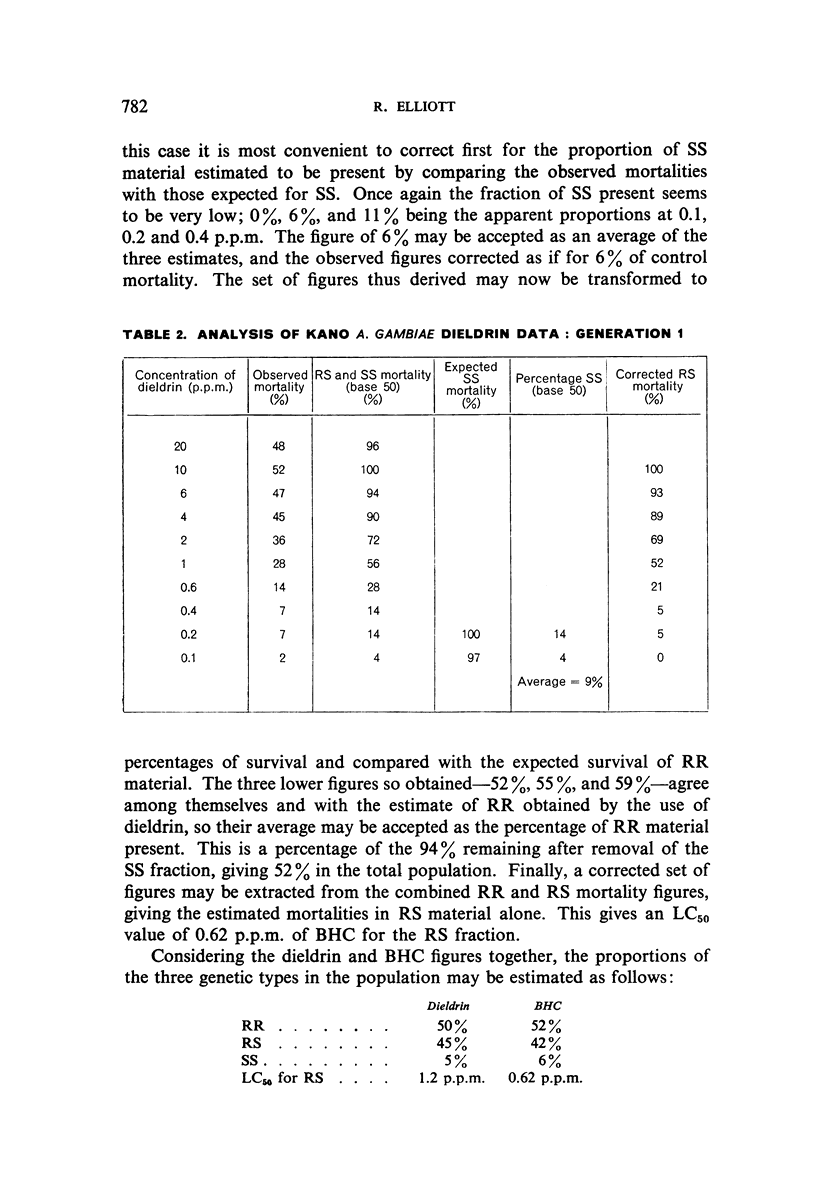

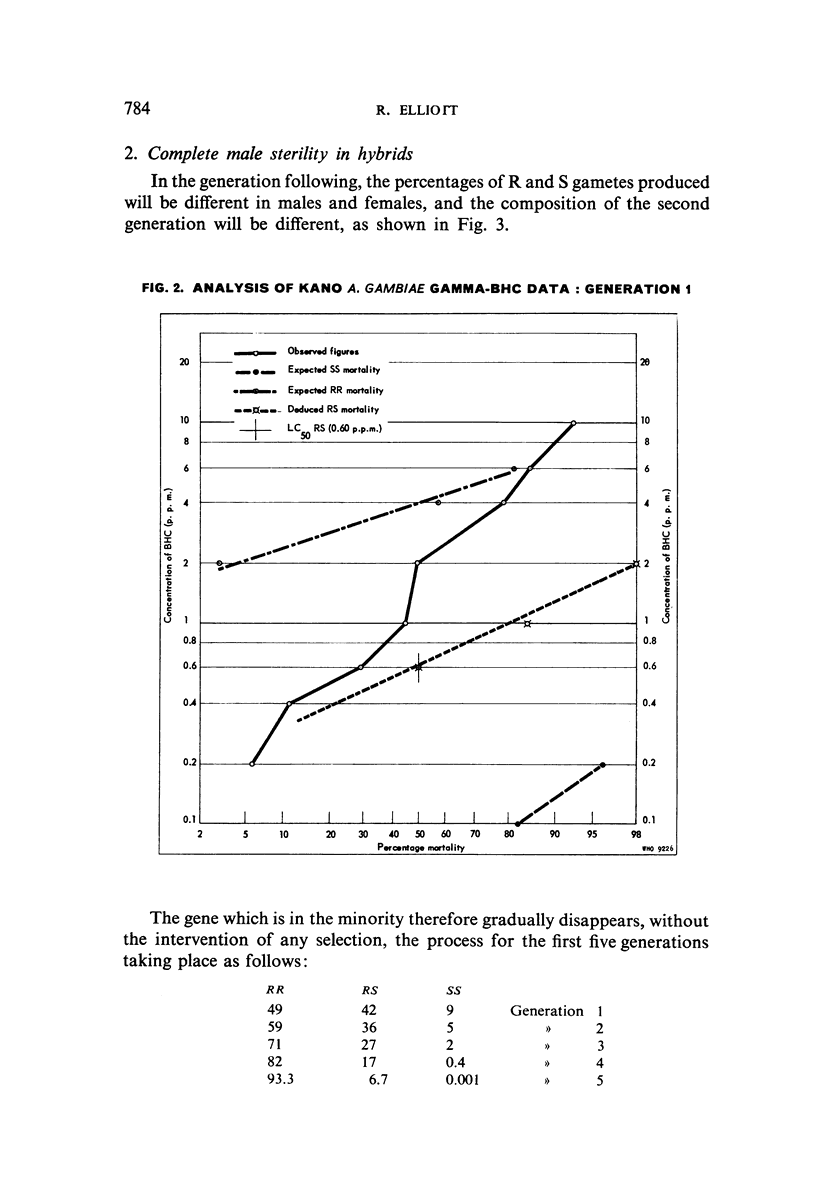
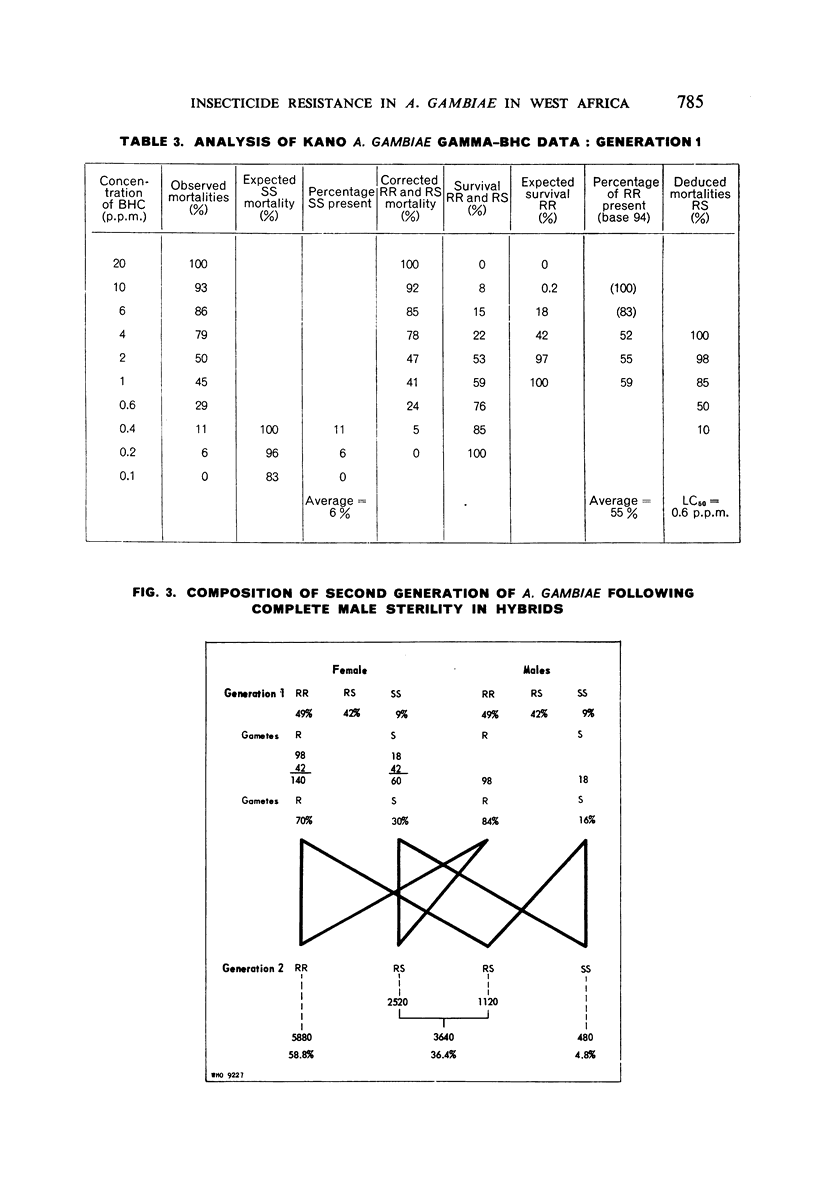
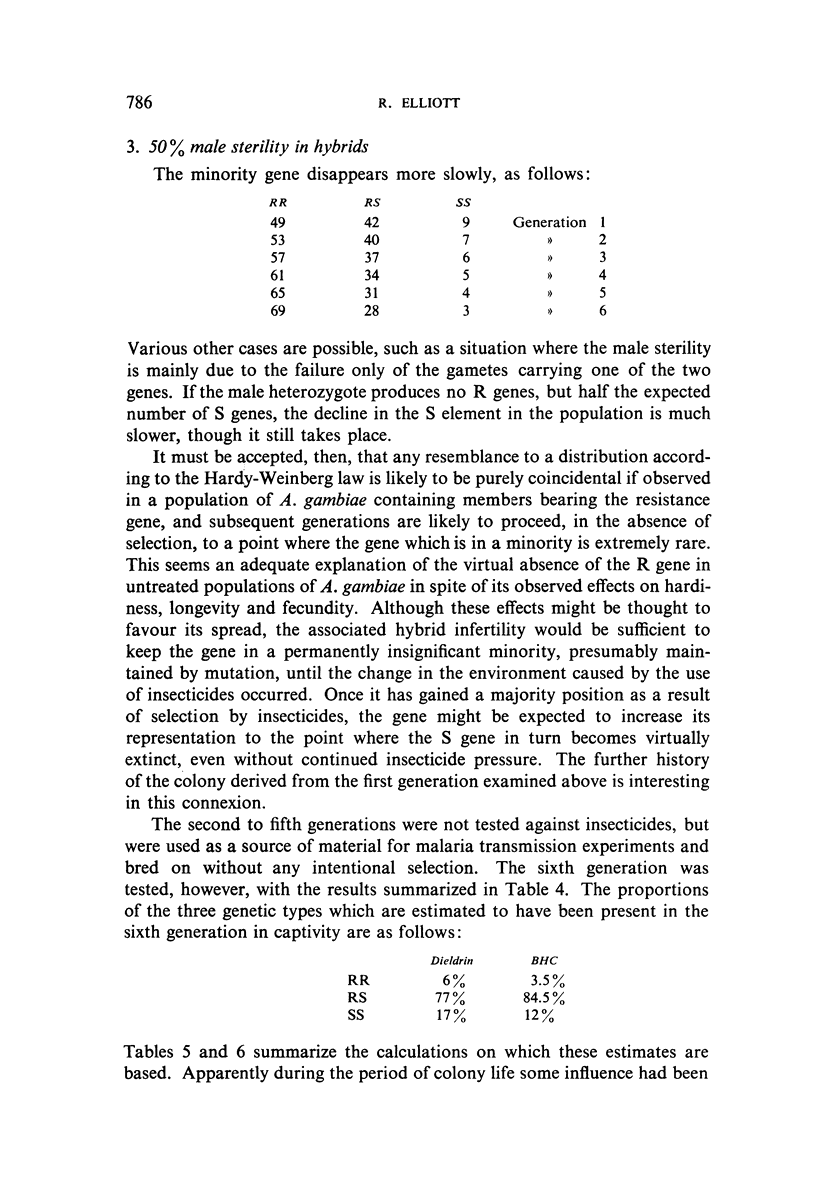
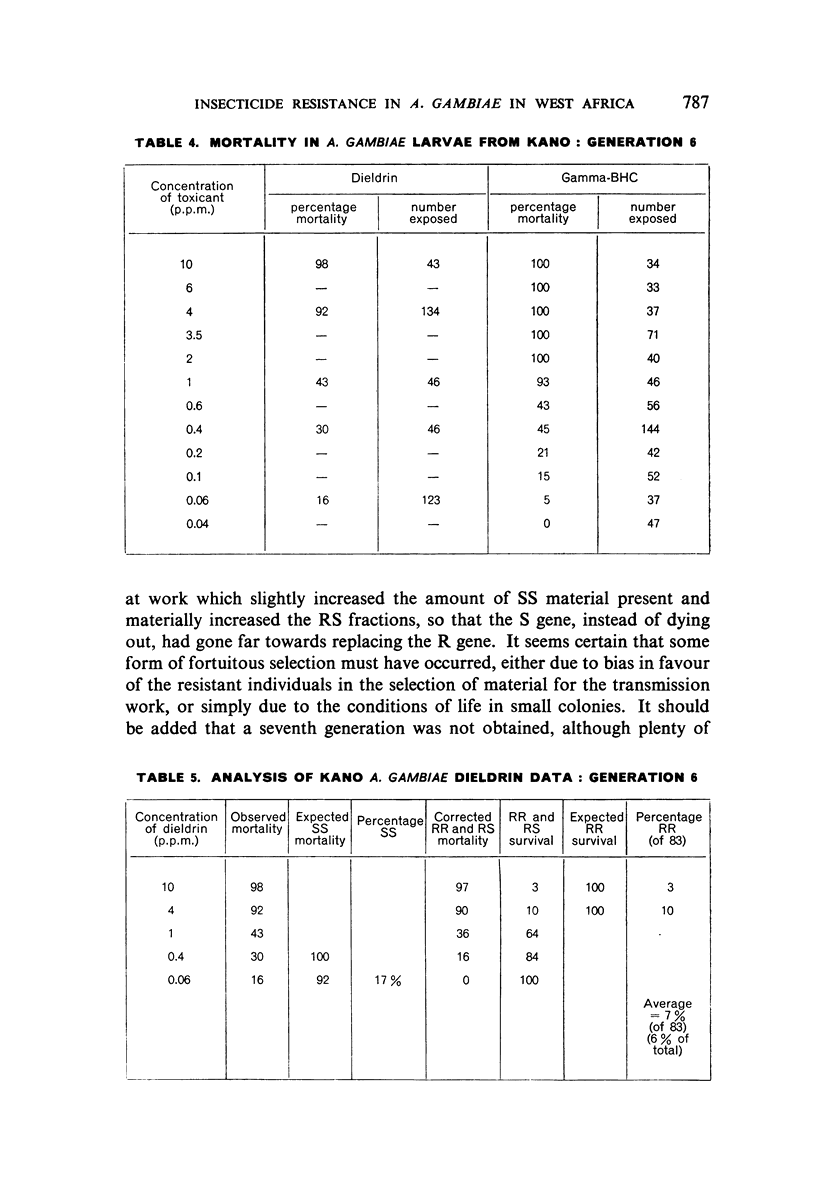

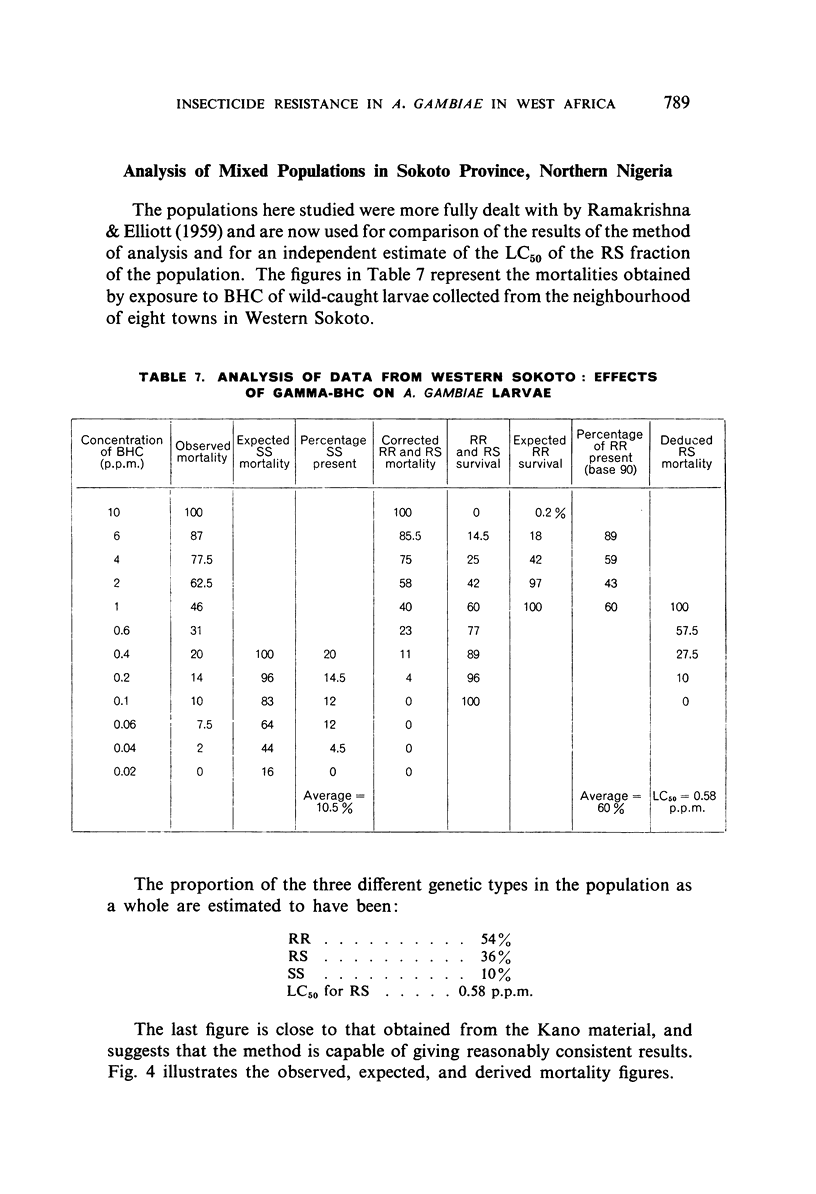

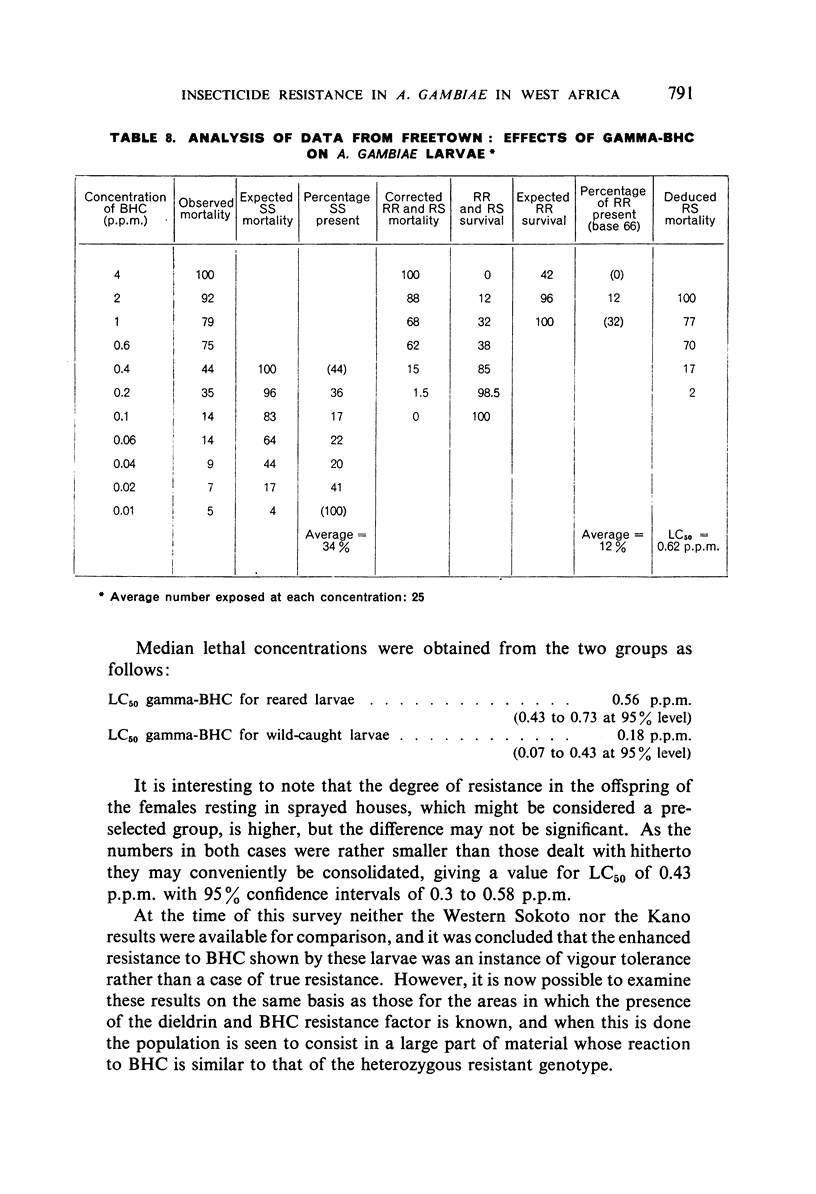

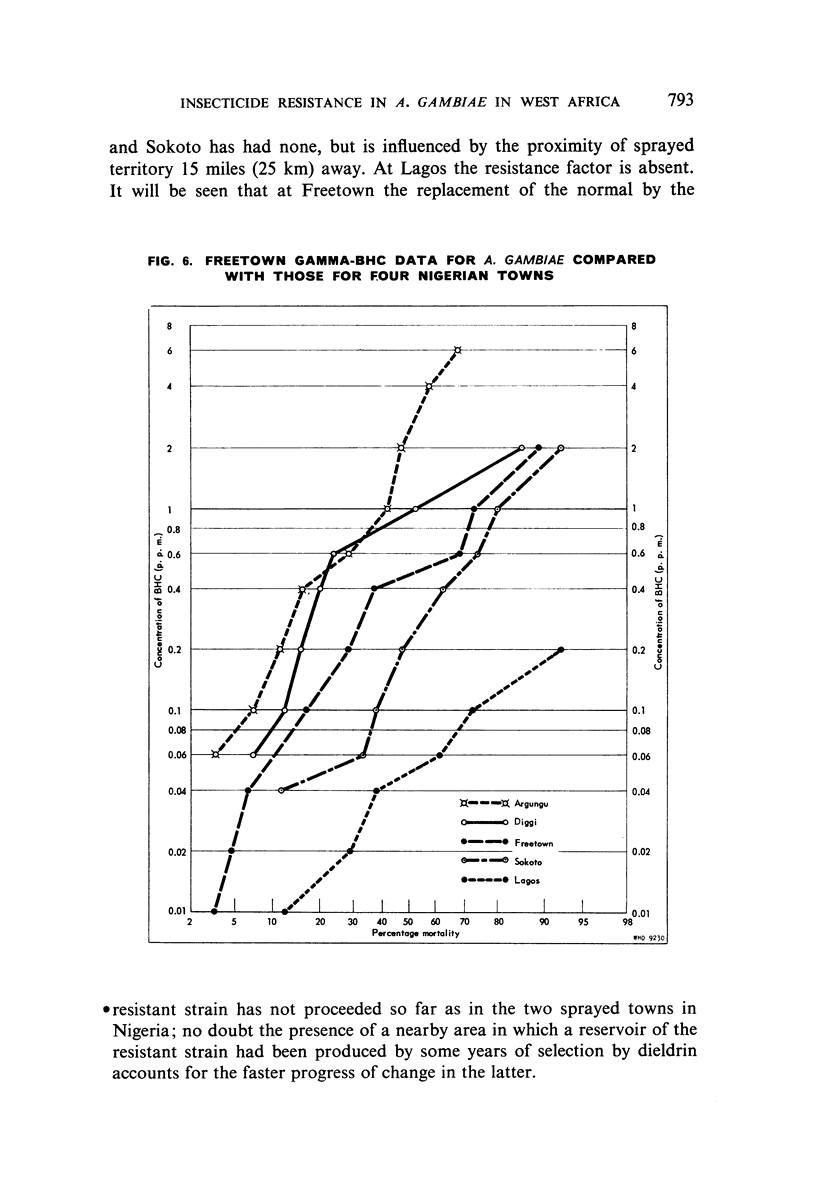
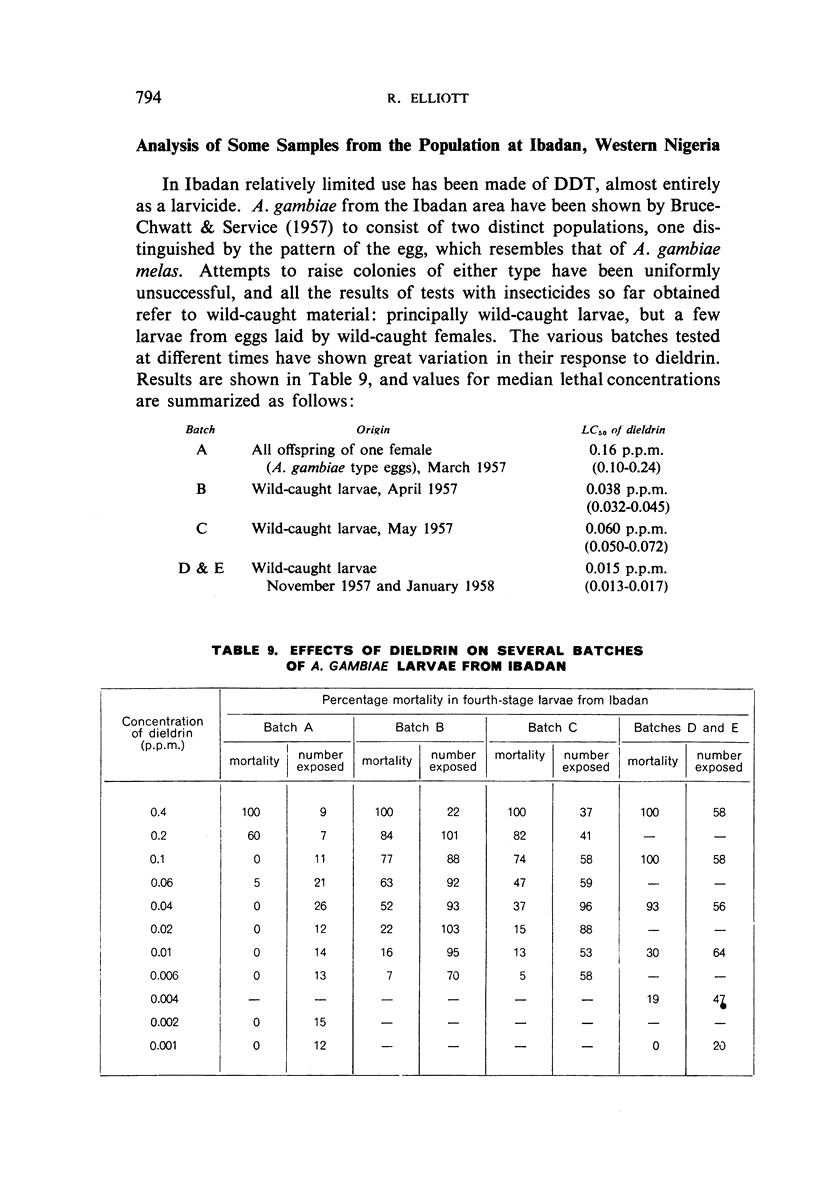
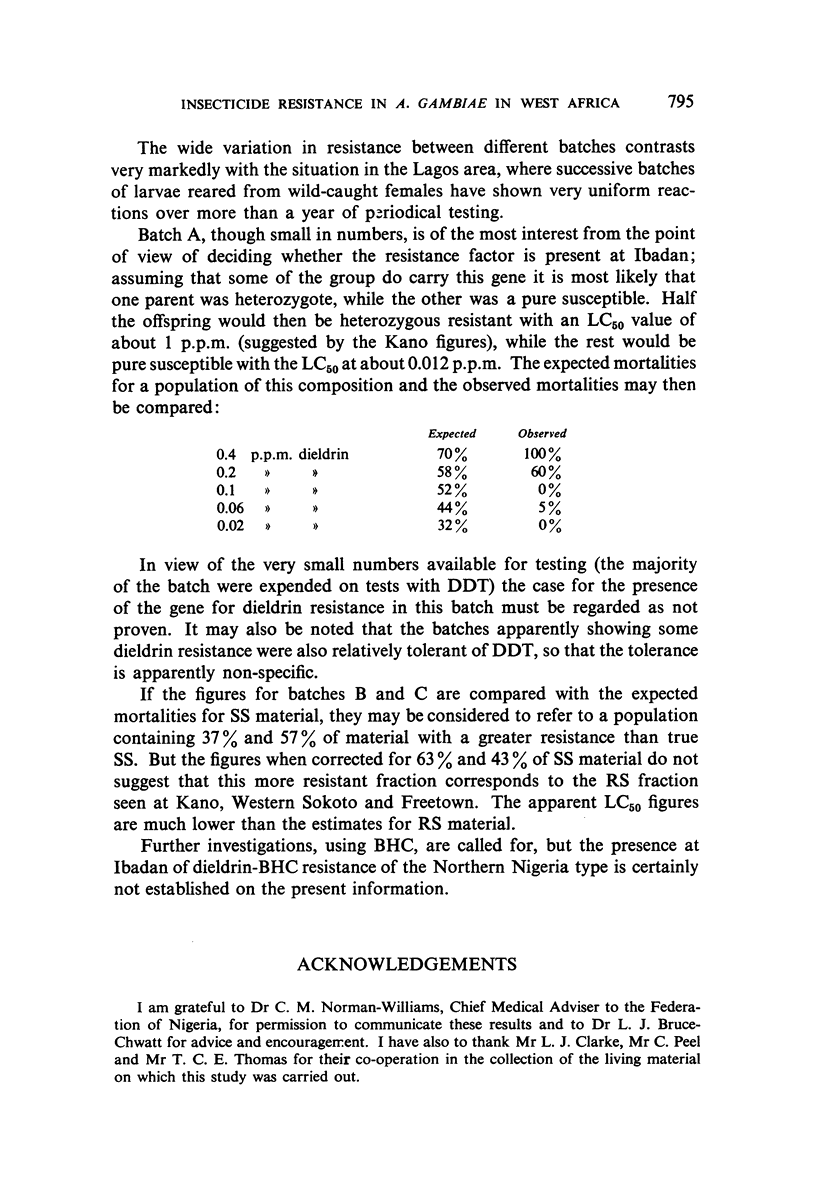
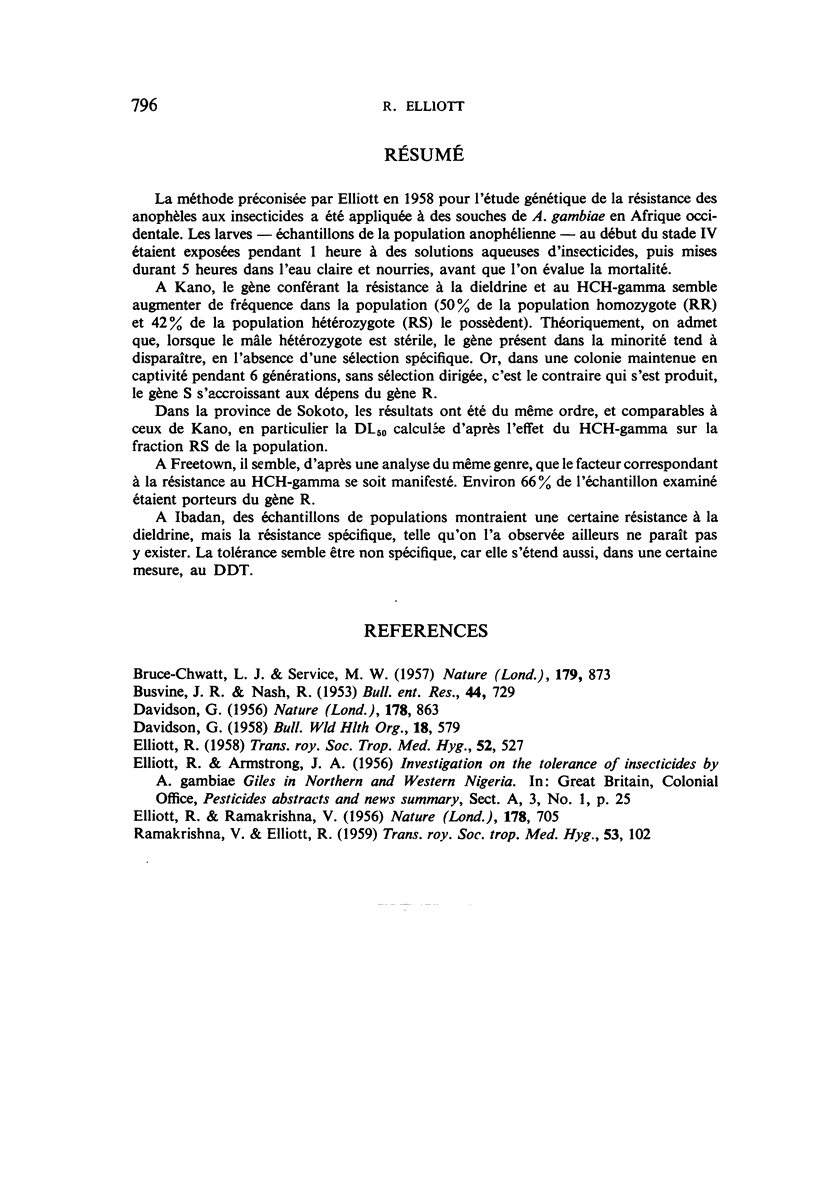
Selected References
These references are in PubMed. This may not be the complete list of references from this article.
- BRUCE-CHWATT L. J., SERVICE M. W. An aberrant form of Anopheles gambiae Giles from Southern Nigeria. Nature. 1957 Apr 27;179(4565):873–873. doi: 10.1038/179873a0. [DOI] [PubMed] [Google Scholar]
- DAVIDSON G. Insecticide resistance in Anopheles gambiae Giles: a case of simple mendelian inheritance. Nature. 1956 Oct 20;178(4538):863–864. doi: 10.1038/178863a0. [DOI] [PubMed] [Google Scholar]
- DAVIDSON G. Insecticide resistance in Anopheles gambiae giles. Nature. 1956 Sep 29;178(4535):705–706. doi: 10.1038/178705a0. [DOI] [PubMed] [Google Scholar]
- ELLIOTT R. A method for the investigation of susceptibility to insecticides in Anopheles larvae. Trans R Soc Trop Med Hyg. 1958 Nov;52(6):527–534. doi: 10.1016/0035-9203(58)90102-0. [DOI] [PubMed] [Google Scholar]
- RAMAKRISHNA V., ELLIOTT R. Insecticide resistance in Anopheles gambiae in Sokoto province. Trans R Soc Trop Med Hyg. 1959 Jan;53(1):102–109. doi: 10.1016/0035-9203(59)90092-6. [DOI] [PubMed] [Google Scholar]


